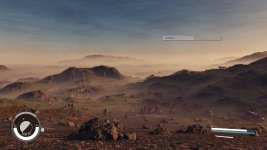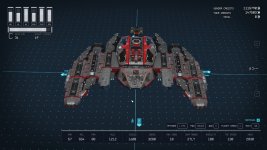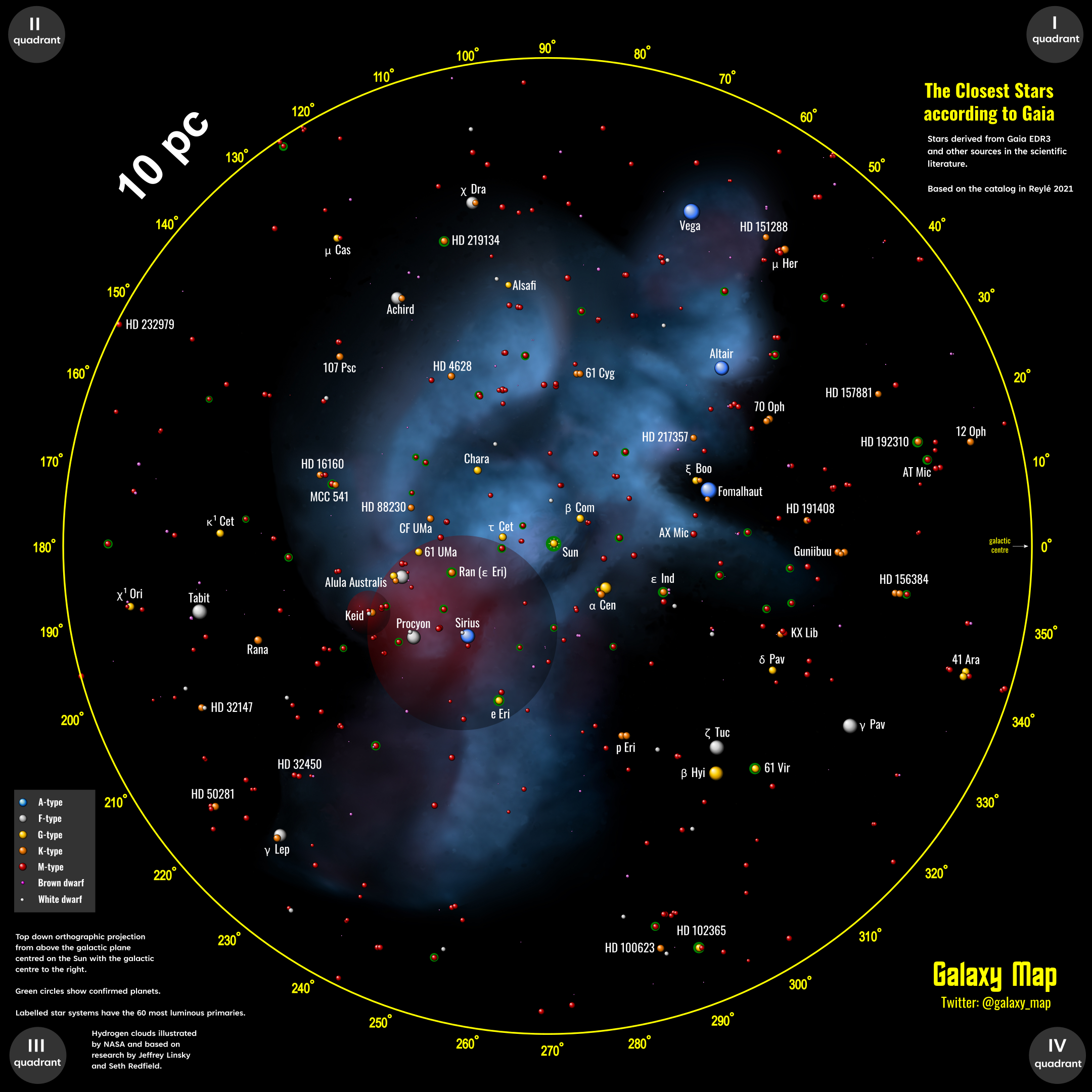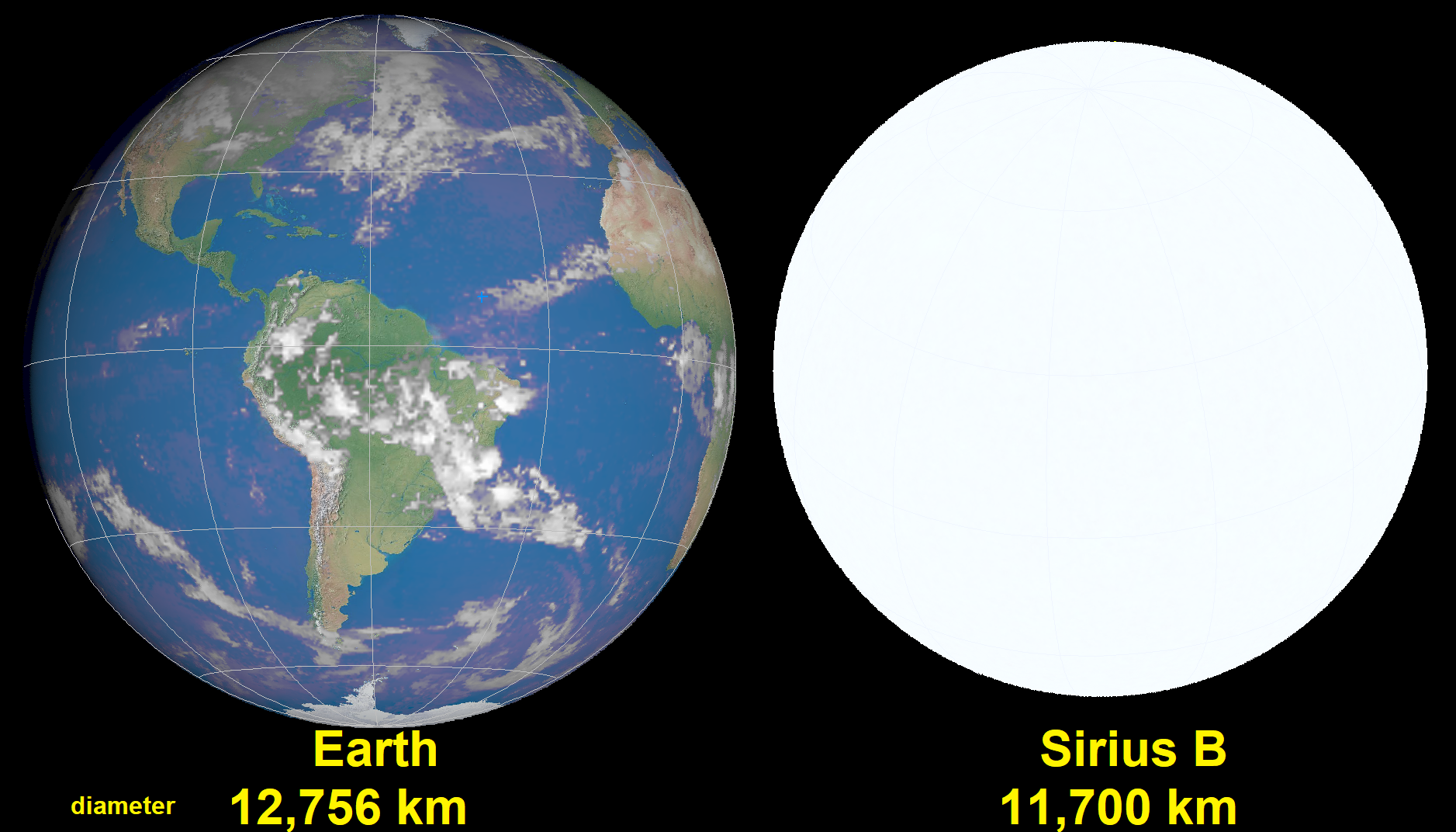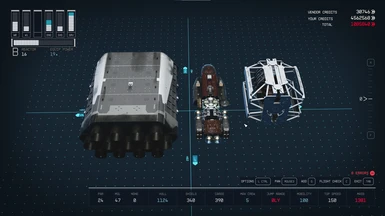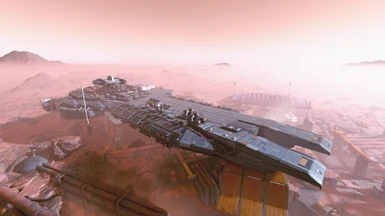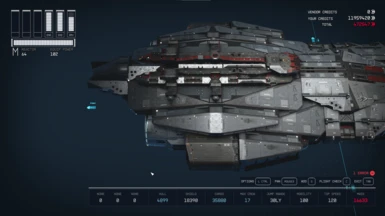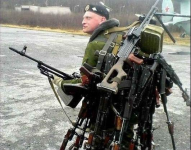Okay, here's my actual review.
Starfield is set in the year 2330. You are a denizen of the Settled Systems, a number of colony worlds split across two major polities, the United Colonies and the Freestar Collective. There are other factions, like the mysterious House Va'ruun (a group of religious zealots who burned much of the Settled Systems in a great crusade nearly a century before), as well as Crimson Fleet pirates, Spacers (murderhobo raider druggies), Ecliptic mercenaries (a barely-legal PMC that also engages in smuggling and wanton murder), and various megacorps with dubious ethics.
Starfield is written less like a true upbeat space opera and more like a cyberpunk story. It is very gritty and pessimistic at its core, laced with venomous commentary about real-world social issues, like The Outer Worlds. After Earth became uninhabitable over a century before, and after a brutal Colony War between The UC and FC a couple decades before which saw the use of giant mecha and mind-controlled alien monsters in warfare, there is grueling poverty and practical indentured servitude everywhere. The housing problem is so bad, some people live in shipping containers.
I felt that the story was a bit of an unfair bait-and-switch. On the surface, Starfield promises a story about exploration, about getting far away from civilization and being in nature in all its wholesomeness, or going on an expedition and encountering environmental hazards and hardships, like reading Roald Amundsen's autobiography about his trip to the South Pole, but when you scratch the surface, this seedy little Frank-Herbert-meets-Neal-Stephenson-esque tale of societal corruption and personal drama spills out. I don't have a problem with the latter kind of story. I like seedy, angsty, depressing stories just fine. I'm not expecting good, clean, Christian sci-fi here, okay? However, it feels like a far cry from what the game's advertising actually promised.
Starfield is not a story about one's experience of self-discovery, summiting a mountain on a faraway planet. There is no storytelling specifically about that. That's a gameplay feature, pressing W or pushing your analog stick forward and wandering towards another bland slab of heightmapped terrain while your NPC follower makes some asinine quip about how gray and empty everything around you is. The actual story here is like an inferior Mass Effect ripoff; a glorified police procedural. Almost everything story-wise that you do in this game involves either rounding up criminals, or acting like one. The vast majority of the plot takes place in populated, urban areas, dealing with urban problems.
Your excursions outside civilized areas are almost plot-free; go from point A to point B, kill all the pirates over here, or grab the artifact over there, and return to society, and that's it. There's no intrigue or storytelling specifically about exploration or colonization. There isn't a moment where your ship breaks down and your crew contemplates resorting to cannibalism or anything like that. There are no experiences of wilderness survival, period. There aren't any moments where your character is pitching a tent in a field while their voiced internal monologue rolls along like a diary, and your character is unvoiced anyway. Every bit of "exploration" in this game is a brief jaunt to an empty field full of rocks, followed by your crew full of manicured socialites lamenting that they're missing their Space-Starbucks and want to return to Space-Seattle to get one and drink it while thumbing their Space-iPads. Jeremiah Johnson this is not. To make matters worse, most of the planets you visit are chock-full of abandoned outposts, so they've technically already been explored by other people at some point in history; you're just retreading the same ground.
At the start of the game, you can create your character, set their body type and appearance, their starting traits, and so on. Regardless of your character's background, you start off the game as a miner for Argos Extractors, working alongside Lin, your hardass Asian wine mommy boss, and the clueless Heller. At some point, you dig up an artifact that gives you hallucinations when you touch it, kind of like the Prothean beacon from Mass Effect. Then, pirates show up, for some reason, just to act as tutorial baddies to shoot. Then, a member of Constellation basically gives you a free ship, just as a ship tutorial. Are you seeing a pattern, here? The writing of the intro of this game is completely driven by the need to shove each of the game's gameplay conventions into the player's head as soon as possible, without any regard for pacing or interest. Unlike the cart ride and dragon attack at Helgen, the intro to Starfield has to be one of the most off-putting things I have ever seen. It is disgustingly boring and inappropriately paced. It's even worse than Fallout 4's whirlwind intro which grants you power armor right away. A guy gives you a whole ship, with no other reason than because pirates are after him because they think his ship is full of loot when it isn't. It's absurd.
Shortly after the intro, you end up joining an artifact-hunting group of explorers calling themselves Constellation. They're after these mysterious alien relics, like the one that made you hallucinate. They're part of a set, you see. The main quest is, at its core, a giant fetch quest to retrieve and unite all of these artifacts, which the head of Constellation, the snippy and enigmatic Sarah MILF, er, Morgan, thinks is important for some reason that is never properly explained.
At first blush, the dialogue writing in this game is atrocious. This is worse than regular Bethesda writing. It is abominable. Every second that passes, I'm gritting my teeth harder and harder with rage at the Netflix-style snarky college grad garbage and the unprompted, oversharing life stories every character spews at the drop of a hat. Shopkeepers and regular passersby will tell you all about their crushes and grudges like starry-eyed high-schoolers, and the only characters who insist on their privacy are almost universally cast as surly crooks with something to hide. It is nauseating. If this is a vision of the future, I don't want to live in it.
The companion and faction quests offer a far more interesting story with better dialogue than the main quest. Sam Coe, for instance, has a rather touching character arc, even if he makes some very questionable life decisions (like bringing his pre-teen daughter aboard a ship that regularly sees combat with pirates and could conceivably be blown to kingdom come). As things progress, the main story does develop and grow a bit of a spine. We see, later on, that Constellation are not as heroic or moral as they appear at first glance and are willing to do shady backroom trades in stolen antiquities to get what they want.
Like Skyrim and Fallout 4, the game has a dialogue system with dialogue trees where you can ask asinine questions you should already know the answer to, or move forward with a quest-giver in a conciliatory or snarky way. You can pick up repeatable quests from terminals, which saves you the time of having to talk to an NPC, but a lot of quests do require conversing with people. Deus Ex this is not; there is little in the way of branching paths. Your dialogue decisions have little to no impact on the plot and are almost purely aesthetic, except for how your followers react, or how much money you make. You know the drill. Immoral choices, like blackmail and smuggling, often make more money, while moral ones earn more brownie points with friends. There is no karma bar, unlike Mass Effect, so otherwise, your moral choices are irrelevant. In fact, the player is free to be completely unhinged and round up smugglers for law enforcement while secretly being a smuggler themselves. Nobody knows or cares what sort of person you are, except your companions, and your companions can always be told to wait outside while you use your leverage to squeeze someone for money.
In fact, a lot of characters in the game are very morally grey when you dig into their motivations. At the conclusion of some quests, it was difficult to decide who to side with. Some quests don't even make any sense at all, in light of the facts in the rest of the story. The end of the Freestar quest line sees you hunting down a crook who was pushing farmers off their land to mine minerals, but resources are free and abundant everywhere. There are thousands of destroyed stations and abandoned outposts to salvage, and if that isn't enough, there are enough minerals in the ground for the player to gather industrially significant quantities of metal just by building a few extractors in a field. What gives?
The side quests vary from the shady, like helping someone smuggle something or destroy evidence, to the zany, like helping a collector get a first edition of a book, or donning a monster costume to scare away annoying tourists (yes, that happens), to the upstanding, like assisting the UCSEC in nabbing criminals.
No attempt was made at any kind of scientific realism in this game. Even though there are no non-human sapient aliens kicking around, and even though the game goes for NASA-inspired visual verisimilitude, the writers' understanding of science and technology is superficial at best. When characters explain the scientific reasoning behind things, those explanations are often just flat-out wrong or implausible, or rely on a heaping helping of Space Magic. This looks like hard sci-fi, visually, but underneath, it's science fantasy. I don't really have any objections against soft sci-fi; Star Wars has plenty of space magic too, and it's a beloved franchise. However, again, this is a perfect example of promising one thing and delivering another. Starfield's aesthetic contains within it the promise of hard sci-fi. Why go to all the trouble of making everything so convincing visually, only to marry it to a script that seems a better fit for shiny chrome rocketships and silver togas?
There is a twist towards the end that I don't want to spoil. Suffice it to say, at some point in the game, you start to acquire supernatural powers. These are a lot like Dragon Shouts from Skyrim, mechanically, in that they have their own cooldown and act as a third dimension to combat aside from your handheld weapons and your mobility. The process of getting these powers is extremely repetitive. You have to do the same exact puzzle for each letter of the Greek alphabet. Yes, it's atrocious.
There is an NG+, and a few things, story-wise, can randomly be different in it. That was surprising, and a little Twilight Zone-esque.
Starfield is an RPG-Shooter in the vein of Fallout 4, Deus Ex: Human Revolution, Cyberpunk 2077, Borderlands, Destiny, and so on. You know the drill. The player gains a perk point to spend per level. Guns and armor have colored rarity grades that dictate how powerful they are and how many additional item perks they have. The Legendary weapons system is very much like in Fallout 4—some weapons have fixed bonuses that can't be changed or transferred to any weapon, like doing additional damage on a first hit on an enemy with full health, or doing more damage with repeated hits, or occasionally setting people on fire. There are a few different damage types; physical, energy, and EM, and three different corresponding armor and perk resistances, however, since you will regularly encounter all three damage types, there is little reason to plan your build around countering one specific kind. Va'ruun baddies favor energy/EM loadouts, while Pirates and Spacers prefer ballistic weapons. Every shootout plays out pretty much the same. Blast away at enemies, hold down the trigger a little longer for the ones with the big health bars, maybe use the game's lock-picking mechanic to hack a robot or some sentry guns to help turn the tables. Pretty standard fare, if you're familiar with Fallout 4.
You have a boost pack, but it's not like a typical jetpack. This one requires a perk to use, and it fires in pulses. One press of the button, and you're launched skyward a fixed distance, according to the type of the pack. It has a fuel bar, which is depleted by a fixed amount with each burst of thrust, and regenerates over time. If you boost off a high point, you have to make sure that you have enough fuel to feather the landing so you don't break your knees. The different pack types do perform differently. For instance, Power boost packs have so much thrust, on low-grav worlds, you'll hit the ceiling instantly. Since some planets have different gravity, it makes sense to keep different types of boost packs around in your ship to vary your loadout.
On high-gravity planets, your stamina runs out faster while sprinting, you take more falling damage and fall noticeably faster, and your boost pack is not nearly as effective. On low-gravity planets, it's the opposite; you can bounce across the terrain easily without expending much stamina, and you're less likely to suffer an injury. That makes them ideal for looting since they still have lots of outpost POIs despite being barren and devoid of anything else of value. Sometimes, if you board a ship with the grav drive disabled, you'll have to fight in Zero-G. While weightless, gun recoil will actually knock you back a fair distance, so you have to brace yourself against walls before firing.
The game has an environmental resistances system where you can be exposed to extreme heat or cold, corrosive environments, toxic gases, et cetera. This works a lot like the diseases system in Elder Scrolls; if you're exposed to an environmental hazard for too long, you might pick up an injury that lasts until you use the specific item to cure that specific kind of injury. You can also craft powerful medical items and chems to treat injuries and boost your performance. Many chems are made from a blend of a couple other chems, which combines and enhances their effects while freeing space in your inventory.
The perks in Starfield are a bit disappointing. Some unlock some rather basic abilities and should be no-brainers to pick on every playthrough, but many of them offer only a flat percentage bonus for some weapon classes and their damage output. There is an opportunity to mix things up with ship combat quite a bit by bringing along crew; your followers' perks apply significant bonuses to your ship's performance. However, bafflingly enough, you are limited to 3 crew on your ship until you unlock a master-level social skill that raises the crew limit, even if your ship is more than large enough to accommodate them. Unless you plow through social skills, it is much easier to get an endgame-level ship than it is to expand your crew roster. In order to advance perks, you need to meet challenge quotas that prove you're using the perk in question before it will allow you to spend a point to move up a rank. These quotas are often nonsensical, like taking falling damage to rank up Gymnastics, a perk that improves your gun stability in Zero-G.
The stealth mechanics in the game are gated behind a perk. If you don't have the perk, then you don't have stealth, at all. Even when crouching and hiding behind obstacles, enemies will detect you and the noise you make basically through walls, like you and your follower are a herd of stampeding elephants. Even with a couple levels of the perk, enemies are insanely perceptive and can spot you from very far away, to the point where the stealth mechanics are flat-out unusable. When playing through the Ryujin quest line, which basically requires infiltration skills, you will be tearing your hair out wondering why you had to save-scum a million times just to avoid being seen. Even Splinter Cell wasn't this brutal.
AI behavior in combat is generally lacking in aggression. Rather than pathing toward the player, aggressively pursuing you (unless the enemy in question is a guy with a knife or some alien critter), they will mostly sit in cover and wait for you to come to them. Your follower, who will frequently quip about you carrying too much stuff and becoming over-encumbered, has awful pathing and will often teleport to your position just to keep up with you.
Naturally, you have an inventory to carry your stuff around in. Unlike in prior Bethesda games, where being over-encumbered meant you were restricted to walking speed, in Starfield, you can sprint while over-encumbered, but you will run out of stamina (which is displayed in the form of a depleting O2 bar) much faster, your stamina will drain even at running speed unless you walk, and if you continue to move at full speed with depleted O2 and full CO2 (the red bar that appears after depleting O2), your health will start to deplete and your screen will blur as you suffocate. This is an unusual way to handle the encumbrance problem, and it means that it's possible to carry a shipload of stuff with you at full speed, provided you're willing to stand still periodically. It means that you're still capable of carrying on in a gunfight even over-encumbered, but getting back to your ship can be tricky if it's a kilometer away.
There is a lot of vendor trash in this game and very few options for sensibly getting rid of it other than dropping it. Vendors have very low currency limits that reset every 48 hours, kind of like Skyrim. Your ship's cargo hold is initially very limited, and if it's full, you can't add anything else. The game is very, very stingy with infinite storage chests; they're only really available at Constellation's HQ. Even the chests you can build in your settlements have a weight/volume limit. The outpost storage is completely laughable and imbalanced. You have to build literal walls of huge containers just to hold a few tons of ore, even though there are side quests that require vast quantities of material (like turning in ore at shipyards). This feels like the inventory management from Space Engineers, only worse. It's just plain annoying how much item juggling you have to do in this game. If you want to simply store everything on your ship, good luck. Cargo containers often make your ship too sluggish to dogfight, until you level up enough to unlock the most powerful engines in the game, and expanding their capacity only kicks the can down the road; it doesn't help the loot accumulation problem.
If you want to have hundreds of thousands of credits to upgrade your ship (because of course you do), then you will be picking up everything that isn't nailed down and trying to sell it, which will make you want to tear your hair out because of all the little stumbling blocks Bethesda will put in your way to keep you from efficiently getting rid of vendor trash. They do everything in their power to pointlessly time-gate currency to keep you from gaining credits too fast, from giving the game a horrifying economy where everything costs twenty times what it pawns for (even Recette Lemongrass would be shocked at how greedy these SOBs are), to forcing you to wait for vendor credits to refresh.
This is how you get rid of vendor trash in Starfield: you have 200 guns in your ship's hold, all of them worthless except for their value in credits. You go to one vendor, sell between three and five guns, depleting all of their credits, walk to the next vendor, sell between three and five guns, walk to the next, fly to the next planet with vendors that have more money until you run out of planets with vendors, and then, you wait 48 hours so you can sell another forty or so guns, rinse and repeat. It's excruciating. Imagine a game where every vendor is Rick Harrison from Pawn Stars who will give you "fifty bucks" for that rifle you lifted off a pirate's corpse, and they tell you their life stories at the drop of a hat and expect you to do things like kindly go beat up loan sharks for them. I want to kill every shopkeeper in this game by strangling the life out of them with my bare hands and watching the light in their eyes die.
A lot of the loot is very disappointing. You can plow through a dozen POIs and never see a single gun worth keeping. The faction quest rewards are even worse. Many of them aren't even leveled, which makes them weak compared to what the player will likely already have by that point in the game.
The ship-building mechanic is kind of basic compared to a lot of sandbox games out there. You can snap together some dozens of prefabs to build a ship, and there are several different manufacturers with their own aesthetics (each weapon and ship manufacturer has their own lore, and some have offices and staryards you can visit; a nice touch). A ship's internal layout is auto-generated based on an opaque priority system. There is no way to get it to lay out ship habitat modules the way you want it to, in terms of ladders and doorways between them, aside from praying to get an interior layout that isn't a maze, or building huge gaps between habs to force a specific layout. Your ship cannot be any larger than 40 meters in radius in any direction (that is, it can't be over 80 meters long). Also, you are forced to build your ship with one bridge, one reactor, one shield generator, et cetera. No doubling up, for balance reasons. You are limited to three different types of weapons on your ship. Each category of device on your ship can receive no more than 12 power units from your reactor. This limits the amount of weapons or engines you can mount per category. For instance, with a weapon that takes 4 blocks of power, you can mount 3 of that weapon and no more (4 x 3 = 12). If you have a weapon that takes 3 blocks of power, you can mount 4 of them, and if it takes 2 blocks, 6 of them, and so on.
Ship combat is a bit like Freelancer or Mace Griffin. It is robust, but basic. You have pitch and roll controls, as expected. There's an afterburner you can hit to boost away from enemies and make some distance. There is a power allocation system where you can divert power to different systems on your ship to make weapons reload faster or boost shield power, but most of the time, you'll want to have shields and engines at maximum so you aren't a sitting duck. If you have the right perk, you can activate your ship's thrusters and perform drift maneuvers. Also, if you have another perk, you can enter a targeting mode to specifically damage enemy ship systems, like knocking out their shield generator or their engines. If you do manage to knock out an enemy ship's engines, and they're the last ship standing, you can board them and clear out the interior on foot. This rewards you with more credits and loot than simply blowing up the whole ship. You can also take over the ship and go to a landing pad to register it as yours, for a fee. The registration fee is only a little bit less than the resale value of the ship, an artificial contrivance which makes selling captured ships only barely profitable (again, the devs go out of their way to time-gate your earnings and keep you from gaining a windfall so easily).
The on-foot gunplay in Starfield is fairly satisfying. Even if the weapons are kind of samey mechanically (with a few exceptions; there is a minigun and a few different metal storm-style multi-barrel railguns, and they kick ass), they have very nice visual aesthetics and sound effects.
Weapons and armor can be customized at specialty crafting tables, using materials gathered in the field. You can change out optics, grips, barrels, muzzle devices, and so on, to make your equipment run exactly the way you want it to. Surprisingly enough, melee weapons cannot be upgraded or customized in any meaningful way and have basically fixed stats. Because of its poor stat growth, melee is strong in the early game, but its relevance fades a bit later on, especially when you encounter powerful boss enemies with big health bars and miniguns. This is not Call of Duty. Some enemies, especially on higher difficulties, are definite bullet sponges and take multiple solid hits to kill. Some monsters, like Terrormorphs, can easily absorb several hundred rounds of ammunition before dying, much like Deathclaws.
Unlike Empyrion, No Man's Sky, Space Engineers, et cetera, the planets in Starfield are not contiguous spheres. When you select a landing site, it generates a several square kilometer flat plane that represents the LZ. This procedurally-generated environment has invisible walls at the edges, and within, a smattering of random points of interest, like abandoned bases, geological features, flora and fauna, minerals to mine, and so on and so forth. If you've ever played Empyrion, this is just like the POIs in that game. You know the drill. Raid bases, kill pirates, take loot.
Starfield has a No Man's Sky-style scanning, mining, and outpost-building gameplay loop at its core. The way this works is quite simple. You can scan a planet from space to see if it has any of the elements you want for your production facilities. Then, land and use your hand-scanner to classify minerals, flora, and fauna. You have a handheld cutter that fires a mining beam to blast surface deposits, but there are also large colored patches on the terrain indicating the presence of subterranean materials (in solid, liquid, and gaseous forms) that can only be gathered by outpost extractors. There are dozens of different elements you can mine and extract, and a limited number of outposts you can build (governed by perks), and each planet only has a few different resource types, so if you want to produce everything, then your task is to find planets with multiple, overlapping resource types, and send resources from one outpost to pile up at another outpost with your factories. The cargo transfer system between settlements is buggy and broken and barely works. Instead of establishing a simple shared inventory, it takes materials from one place and dumps them into the containers at another. There is no guarantee that any of the materials you need will show up at their destinations, and if they do, they will quickly overload the containers there. It's not balanced or meaningful at all. It's a frustrating mess fit to make even a veteran Factorio player pull their hair out.
The exploration is decent, but it's held back by some occasionally rather ugly randomly generated terrain that makes for some very flat-looking environments, especially at midday. The assortment of creatures and POIs you can encounter are interesting, but they can also be very repetitious. It's especially egregious when some of the POIs in the game are structured such that you will encounter the same memos, the same clutter items in lockers, and, in one ridiculous case, the same identically placed corpse of the same person, on multiple planets, over and over again. Sloppy and immersion-breaking.
The POIs and random encounters could have used significantly more variety, and I don't mean by a small amount, either. Sometimes, you can walk from one POI several hundred meters to another POI that looks absolutely identical. I mean, there should have been at least ten times as many different POIs and random encounters, and some of them should have ideally been non-repeating. There just isn't enough variety here. I've had the same encounter with Space-Grandma five times. Maybe she has Space-Alzheimer's and doesn't remember me.
After you've scanned enough examples of a particular animal, various kinds of data will appear about that creature, such as their health, any weaknesses, what materials they drop when killed (or harvested from non-destructively), and their disposition (like whether or not they are passive prey animals or aggressive predators to be avoided). Some plants can be grown at your outposts for materials, and some creatures can be domesticated for materials, too.
Starfield has some of the worst-ever interactions with water and sea creatures I've ever seen in a game. The water effects are worse than Skyrim. You can't swim beneath the surface of water, only paddle around on the surface a bit in your space suit. You can see alien fish, whales, sharks, whatever, beneath the surface with your scanner, but only as outlines. The only time you see their whole carcasses is if they've been killed and floated to the surface, either by a predator, or by you shooting them through several feet of water. Grenades don't work on fish in this game at all. They don't even sink in water, just float on the surface. No blast fishing for you.
The game has a lock-picking mechanic to open containers and hack consoles. This consists of using a Digipick and completing a puzzle which involves rotating little pins on a ring-shaped dial to fit them into corresponding holes. Some sets of pins have different shapes that fit in different hole patterns in different orientations. It is entirely possible to make the puzzle impossible to solve if you use up the wrong ones too early and don't have the corresponding sets to get through the last the last rings. I got to be pretty good at solving these, but really, they feel like annoying playtime padding, like every lockpick mechanic in a game. At least they're not forcing us to play Sudoku. I'm looking at you, Mass Effect: Andromeda.
The graphics in Starfield are a mixture of beautiful and detailed consoles and buttons and technological artifacts slaved over by contractor artists working long hours with Max, ZBrush, and/or Substance Painter, combined with some of the ugliest, most uncanny valley-looking, waxy characters I've seen in a current-gen title. The dialogue system in the game does not have fully mocapped faces, but is instead phoneme and expression-based like previous Bethesda titles. This results in rather rigid facial animation interspersed with bizarre brow-wrinkling. The face tech in this game would have been revolutionary fifteen years ago. Now? It's stomach-turning. Don't believe me? Ask Vaas Montenegro in Far Cry 3, which came out eleven years ago. Now that's a face.
Granted, I am fully aware of the workload involved in doing performance capture in a game with this much dialogue, and why some developers still choose to take the route of manipulating characters' faces like a player piano, but in this day and age, this sort of tech just looks weird.
The procedural planetary environments are sometimes gorgeous, sometimes gruesome. It depends on how the lighting hits them. At sunset or sunrise, when all the terrain objects are casting long shadows, they look neat. At noon, they look flat and unshaded, with no impression of depth whatsoever aside from patches of unconvincing volumetric fog.
The cities have incredible architecture and a lot of fine details. Pipes, cables, scaffolds, and gratings are hanging everywhere. Environments look dirty and realistic and lived-in. The game's NASApunk aesthetic is very cool, even if it is in service of a fairly standard space opera and not a true hard sci-fi universe.
The game has some weird, ugly filters that put a greenish tint over everything, a lot like the bluish tint in vanilla Skyrim.
Character movement animations are a lot better than usual for a Bethesda game. Character movement animations are fully mocapped and they have momentum and accelerate into sprints and lean into turns. This is way better than the really stiff hand animations in older Bethesda titles. I still remember the Oblivion/FO3 era and how the character movement looked.
The audio is on-point here; firearm discharges are extremely loud and fill enclosed spaces with a short, thudding reverb, just like the real thing. There is about as much attention to detail to the gun sounds in this game as there is in Battlefield, and it's quite impressive. There is something about firing off a Magstorm and audibly ripping a new you-know-what-hole into someone that is just *chef's kiss*.
I see some people out there complaining about the gun sound effects in Starfield, but this is really just a case of the Coconut Effect. So many people out there have never heard real firearms, they have no idea what they actually sound like. I'm a gun enthusiast IRL, and while not perfectly true to life, the naturalistic style of the gun sounds here is noticeable and impressive. The weapons here have a very Neill Blomkamp-ish feel, where even the sci-fi guns are plausibly engineered products and emblazoned with manufacturer's marks and fine details, and they have an auditory report to match.
Everything in this game sounds cool. Even doors sound cool. Every sound is tactile and has a sort of presence to it. For boost packs, you can hear where they sampled turbocharger blow-off valves and stuff, and it just sounds really nice overall. If you land too hard, your bones make a sickening crunch. Footsteps sound completely different depending on the materials you're running on, of course, but that's been a staple of game sound design for ages. The sound guys did an impeccable job, here.
Inon Zur's score for the game is breathtaking. I don't say that lightly. From the atmospheric ambient orchestral tracks that set the stage for your planetary sojourns, to the percussive and brutal combat themes, this is a soundtrack that belongs in a much, much better game.
Starfield is laced with a number of annoying bugs. Follower pathing is terrible, and they often get stuck on things, or run into walls and judder spasmodically. I've seen characters float up into the sky. Sometimes, objects on planets spawn in midair. Other times, you'll encounter UCSEC officers with no clothing, or geometry in cities that completely failed to load. Some cell transitions make the game thrash really badly and dip below thirty FPS, even on a very powerful rig. It is very clear that the engine is struggling to keep up with what they tried to do here. The physics are occasionally impressive, and occasionally screwy, depending on which way the wind blows.
There are a lot of subtitles that are just plain wrong, and they're filled with typos.
The interface is horribly designed and involves a whole lot of tabbing back and forth through multiple layers, making even something as simple as consulting a map for a fast travel destination into a chore.
The game lacked 32:9 support out of the box, but they're promising it in a future patch.
Starfield is a very derivative, very paint-by-numbers game. It feels like playing a list of bullet points assembled by Todd Howard. It was made by committee. There were too many cooks in the kitchen and it spoiled the broth. It feels like an inferior clone of other, better RPGs that Bethesda themselves made in the past. There's the questing, the perks, the customustomization, the loot, the cast of zany characters. Everything you've come to expect from an RPG. But what if what we've come to expect is somehow wrong? What if it's not enough? What if what the gaming industry really needs is for someone to shake it out of its torpor and come up with something actually fresh and new? The same old garbage, the same rehashed adventures, are not going to cut it anymore. And, let's face it, for the budget this game had, they could have done a whole lot better than this.
Regardless, in spite of how sour I might sound, there are plenty of times I had fun with it, and I am looking forward to modders improving this game by volunteering their precious time for free for the sake of the sloppy ingrates who developed it.
Story – 6/10 [The dialogue writing and overall scenario are bland and annoying. Most of the characters are snarky jackasses who regularly make poor life choices. Everyone pointlessly overshares their life stories. It's not all bad; getting involved in uncovering UC and Freestar conspiracies can be engaging at times, and some of the companion loyalty quests are touching. The intro sequence is extremely boring and off-putting, to the point of driving people to refund the game before they can even get to the vaguely interesting parts. The main story does improve and build up steam toward the climax, however.]
Gameplay – 8/10 [It feels like Fallout 4 with a new coat of paint, plus a bit of No Man's Sky. Combat is generally quite solid, so long as you aren't battling framerate issues (unlike Fallout 4, there is no VATS here to help you aim if you aren't getting a solid framerate, so it's really crucial that your hardware can keep up). The outpost and ship-building mechanics are generally fun, but they are marred by a horrible inventory system where resources and vendor trash pile up with no way to conveniently get rid of them. There is a somewhat interesting but repetitive and time-padding lockpick mechanic.]
Graphics – 7/10 [Starfield is a bit of a mixed bag, graphically. Some of the detail work and hard surface modeling on various technological props is eye-popping, and there are a lot of nice little specularity and PBR material effects everywhere. The cities have some very impressive details and architecture. However, this is counterbalanced by an overuse of color grading that puts an analog fade over everything, with grayish blacks and poor contrast. Some volumetric fogging in certain environments can be cool, especially when you're on Titan or at the Red Mile and you see fog hit by a light source like a street lamp or ship engine, but sometimes, it's a little overdone. Some planetary environments look extremely flat and unappealing at midday, due to a lack of overhanging environment objects and shadows, to the point where you'll be staring over a field full of crooked trees that looks like Mount & Blade 1 on low graphics. Really egregious. How could they not see it?]
Sound – 9/10 [This would be a 10/10, but I had to dock a point for audio bugs, such as sounds not playing when they should, or playing when they shouldn't (like the looping whistle of an in-flight 40mm grenade playing continuously in one spot). The sound effects are fantastic. Guns are punchy, ship engines roar and crackle like they were recorded from real rockets, and even the doors and airlocks sound cool. Inon Zur's score is mesmerizing and epic, and this game would be practically worthless without it.]
Technical/UX – 4/10 [Lots of bugs are still present. The subtitles are often incorrect, and there are a few lines of dialogue that use pre-release names for things that were changed later in production. Starfield has very poor optimization and did not ship with 32:9 super ultrawide support (though it is promised in later patches and currently available with a third-party fix). Even with my RTX 4090, getting a solid 60 FPS is a tall order. When walking between cells, there is a great deal of cache chugging. There isn't anything going on here, visually, that would account for the inconsistent performance, except for Bethesda's ham-fisted NetImmerse fork, the Creation Engine 2, being pushed to the very limit of what the underlying code can do. Considering that we've had games for years with seamless space-to-planet transitions and spherical planet topology, the randomly generated flat plane zones you can visit with your ship are technically unimpressive. There are loading screens and fast travel galore, and it really breaks up the pacing of the game. Maybe Bethesda should just ditch Creation at this point and get a real engine? Also, the menus and UI have way too much tabbing back and forth through several layers, making the inventory management problems even more apparent.]
Overall – 7.5/10

